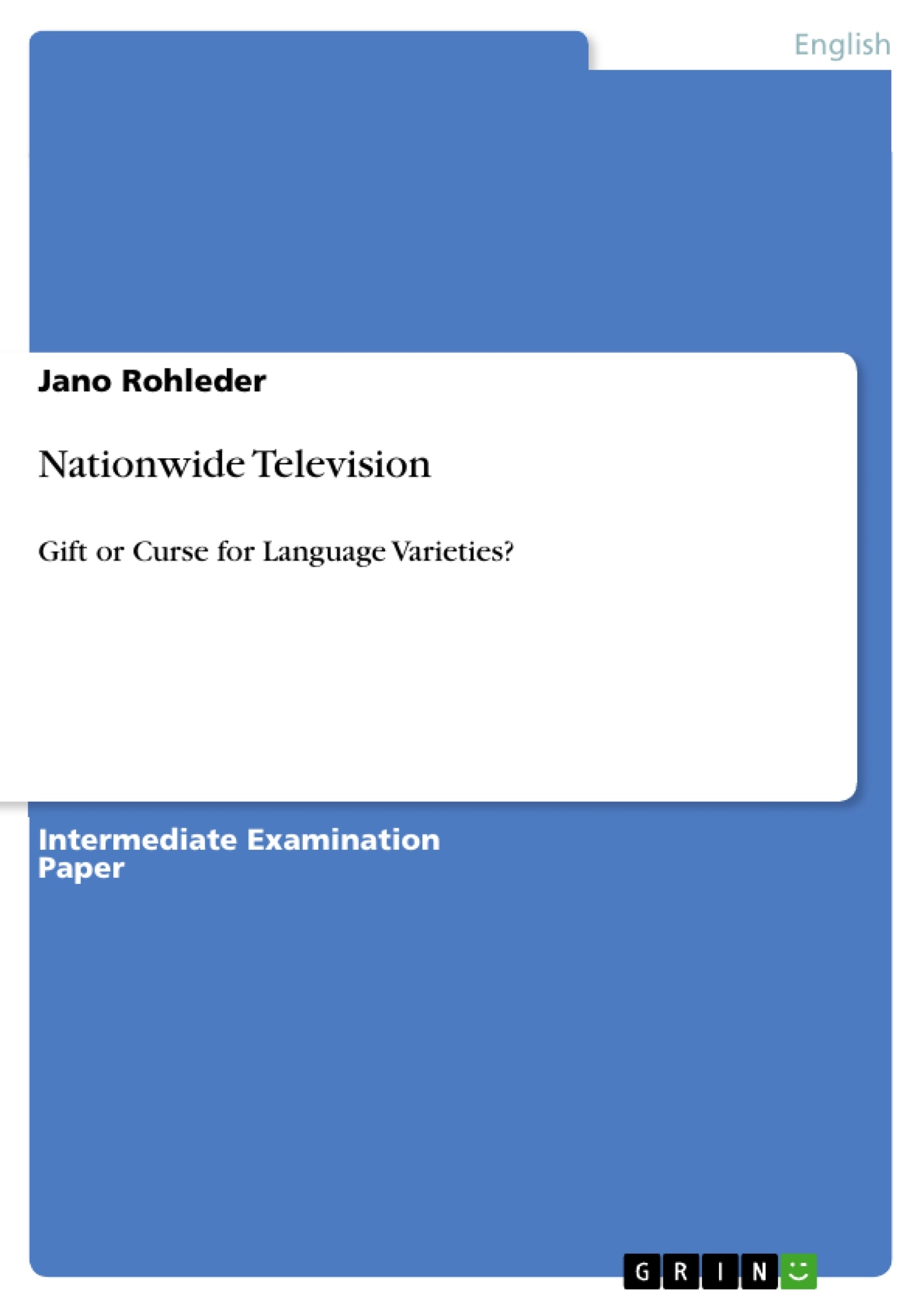This paper discusses the positive and negative effects nationwide American television has (had) on the language's regional and social varieties.
Inhaltsverzeichnis (Table of Contents)
- Nationwide Television: Gift or Curse for Language Varieties?
- Television: Transporting language all over the country
- News: The standard language
- Portraying the real world
- For the means of comedy
- Creating new standards
Zielsetzung und Themenschwerpunkte (Objectives and Key Themes)
This paper explores the impact of television on the American language and its varieties. The author investigates how television both reflects and influences regional and social language variations, examining the interplay between language, representation, and cultural identity.
- The role of television in spreading and influencing language varieties.
- The use of standard language versus regional and social dialects in television programs.
- The impact of television on language acquisition and the development of new linguistic trends.
- The relationship between language and character portrayal in television.
- The use of language for comedic effect and social commentary.
Zusammenfassung der Kapitel (Chapter Summaries)
- Nationwide Television: Gift or Curse for Language Varieties? This introductory chapter sets the stage for the paper by discussing the pervasive influence of television on society and the potential impact of this medium on the American language.
- Television: Transporting language all over the country This section delves into the historical context of American language varieties, emphasizing the role of migration, social factors, and regional differences in shaping the language. It then introduces the impact of television as a major new force in language diffusion.
- News: The standard language This chapter focuses on the use of standard language in certain television genres, particularly news programs. The author explains how the need for neutrality and broad accessibility shapes the language used in news broadcasts, often favoring a form of General American.
- Portraying the real world This section explores the use of regional and social language varieties in television programming, arguing that realistic portrayal of characters and settings requires linguistic authenticity. The author uses the example of the popular sitcom Roseanne to illustrate this point.
- For the means of comedy This chapter examines the role of language in comedy, noting that language serves as a powerful tool for satire and caricature. The author discusses how comedians like Robin Williams use voice impersonation and parodies of regional accents to create comedic effect.
Schlüsselwörter (Keywords)
This paper examines the intersection of television, language, and culture, focusing on the impact of television on the American language and its varieties. Key terms include: regional dialects, social varieties, language diffusion, media influence, standard language, General American, character portrayal, comedic language, and linguistic innovation.
- Arbeit zitieren
- Jano Rohleder (Autor:in), 2007, Nationwide Television, München, GRIN Verlag, https://www.grin.com/document/141286



